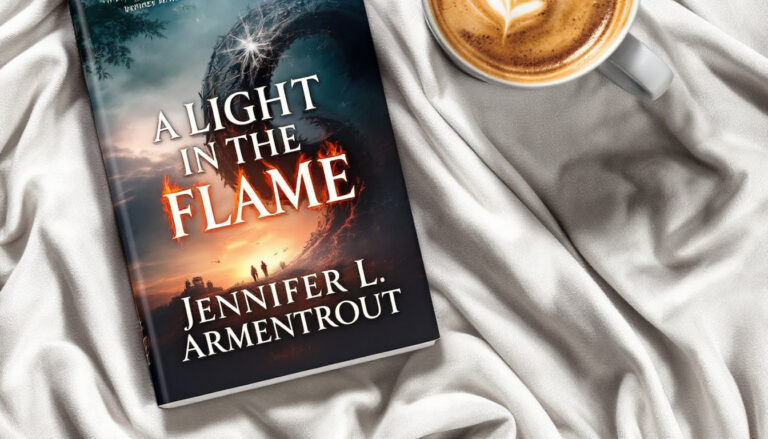A Knight of the Seven Kingdoms by George R. R. Martin Book Review
Set a hundred years before the events of Game of Thrones, A Knight of the Seven Kingdoms takes readers to a different side of Westeros—one filled with smaller-scale adventures, personal stakes, and a warmer tone. This collection of three novellas by George R. R. Martin follows Ser Duncan the Tall, a humble hedge knight, and his sharp-witted squire, Egg, whose true identity carries royal weight. Through their travels, readers experience tales of honor, friendship, and the quiet echoes of the Targaryen dynasty. With a tighter narrative and a focus on character-driven storytelling, this prequel offers a refreshing glimpse into the lore of Westeros without the overwhelming complexity of the main series. It’s a journey that feels both familiar and distinct, making it a must-read for fans and newcomers alike.
Setting the Stage: Westeros a Century Before Game of Thrones
The world of A Knight of the Seven Kingdoms is both familiar and distinct, offering fans of A Song of Ice and Fire a chance to experience Westeros through a fresh lens. It’s a Westeros not yet engulfed in the chaos and dragons that dominate the main series, but instead, one shaped by political unrest, lingering loyalties, and personal tales of honor. This period, set a century prior to Game of Thrones, serves as fertile ground for exploring themes that resonate deeply with readers while keeping a focus on the human experience.
The Intrigue of the Blackfyre Rebellions
At the heart of Westeros’ political instability in A Knight of the Seven Kingdoms lies the aftermath of the Blackfyre Rebellions. These civil wars, sparked by a claim to the throne by Daemon Blackfyre—a legitimized bastard son of King Aegon IV—fractured the realm into factions of loyalists and usurpers. Although the first rebellion had ended decades before Ser Duncan the Tall and Egg’s journey, its consequences linger heavily in the stories.
The Blackfyre Rebellions weren’t just skirmishes—they were a family feud that rippled through every aspect of Westerosi society. Great houses chose sides, bonds of loyalty were strained, and mistrust seeped into the cracks of political alliances. This backdrop is brilliantly woven into the novellas. For characters like Dunk and Egg, it’s not just ancient history; it’s a present reality that affects who they can trust and how they navigate the complex world of knights and lords. Learn more about the historical importance of the Blackfyre Rebellions here.
By setting the stage against this turmoil, George R. R. Martin crafts a rich tapestry of tension and unspoken conflict. Even though the focus of A Knight of the Seven Kingdoms is smaller in scale, the echoes of the rebellions make the world feel authentic and layered.
A Simpler Yet Richer Westeros
Unlike the sprawling epic of A Song of Ice and Fire, this prequel presents a Westeros that is simultaneously simpler and deeper. Without the dragons, White Walkers, and sprawling political conspiracies of the main series, the focus shifts to personal struggles, quiet moments, and moral dilemmas. The result is a story that feels intimately human while still full of drama.
Martin’s choice to scale down the narrative allows readers to explore the daily lives of hedge knights, smallfolk, and minor lords. Dunk, though humble, embodies the very ideals of knighthood in a way that contrasts sharply with the decadent or power-hungry knights seen in the later timeline. Egg, on the other hand, showcases the complexities of royal expectations versus personal ambitions. Their interactions bring levity and warmth, reminding fans why they fell in love with Martin’s character-driven storytelling in the first place.
What makes this simpler timeline richer is its focus on the understated details of life in Westeros. From the description of bustling market villages to tournaments brimming with honor and rivalry, it paints a vivid picture of a world where small actions carry great weight. This review captures the refreshing tone of the book beautifully.
By stripping away the grandiose elements, Martin allows the themes of friendship, loyalty, and the cost of honor to truly shine. If the main series is a dragon’s roar, then A Knight of the Seven Kingdoms is the whispered promise of an oath—quieter, but no less powerful.
Meet the Heroes: Ser Duncan the Tall and Egg
When it comes to A Knight of the Seven Kingdoms by George R. R. Martin, the heart of the story lies in its two leading characters: Ser Duncan the Tall, affectionately known as Dunk, and his squire Egg. Their relationship forms the backbone of the narrative, breathing life into the world of hedge knights and unspoken truths about nobility. Through Dunk’s steadfast honor and Egg’s sharp wit, we see a Westeros where personal virtues matter more than crowns or castles.
The Relatable Charm of Ser Duncan the Tall
Ser Duncan the Tall, or “Dunk,” isn’t your typical knight in shining armor. He starts life in Flea Bottom, the poorest corner of King’s Landing, and works his way up to knighthood through grit and determination. His towering stature may command attention, but it’s his humility and moral compass that win hearts. Dunk doesn’t just see knighthood as a title; for him, it’s a code of honor to uphold.
In the world of A Knight of the Seven Kingdoms, Dunk’s perspective offers a refreshing departure from the often jaded worldviews of other characters in Westeros. As a hedge knight, he scrapes by, traveling from tourney to tourney. This life of modest means forces him to confront what being a knight truly means. Is it about wealth and status? Or is it about protecting the weak and staying true to one’s vows? Dunk leans into the latter, even when faced with difficult choices that could cost him dearly.
Readers can’t help but root for Dunk because he’s profoundly human. He doubts himself, makes mistakes, and frequently reflects on whether he truly deserves to call himself a knight. But it’s precisely these flaws—and the lessons he learns along the way—that make him relatable. Dunk becomes a mirror for an ideal many aspire to: being good, even in the face of adversity. His evolving ideals of knighthood remind us that true power lies in actions, not titles. For a deeper understanding of Dunk’s journey, you can explore this character analysis.
Egg: The Secret Prince in a Squire’s Clothing
Then there’s Egg—Dunk’s junior partner who is more than meets the eye. Beneath his bald head and humble attire lies the true identity of Aegon Targaryen, a prince of one of Westeros’ most powerful dynasties. Choosing to venture the world as a squire, Egg embodies a fascinating dichotomy: the royal blood he was born with versus the simple life he willingly embraces.
Egg’s presence adds layers of complexity to the novella. His upbringing in privilege hasn’t blinded him to the injustices of the realm. Thanks to Dunk’s guidance, he begins to see the world not only through a prince’s lens but through the eyes of the downtrodden. The relationship between the two is symbiotic; Dunk teaches Egg honor, humility, and how to wield power responsibly, while Egg’s quick wit and resourcefulness enrich Dunk’s journey.
What sets Egg apart is his evolving take on nobility. He challenges the idea that birthright determines a man’s worth. Through his travels with Dunk, he gets a front-row view of the struggles faced by the common folk, and it shapes his understanding of leadership. This nuanced character growth makes Egg a refreshing counterpoint to his family’s often destructive ambition. Discover more about their dynamic in this thoughtful overview.
Together, Dunk and Egg embody the heart of A Knight of the Seven Kingdoms: a story of growth, friendship, and finding meaning in the simplest acts of courage and kindness. Their journey is a testament to how even the smallest figures can leave a lasting legacy in the grand history of Westeros.
The Novellas: Stories Full of Honor, Friendship, and Conflict
The heart of A Knight of the Seven Kingdoms lies in its three novellas, each bringing a distinct flavor to Dunk and Egg’s journey. These stories weave themes of honor, loyalty, and the ever-present shadows of conflict into a narrative rich in humanity. Together, they paint a vivid illustration of Westeros during a time when personal choices carried as much weight as political machinations.
The Hedge Knight: A Tale of Trials and Tribulations
In The Hedge Knight, George R. R. Martin introduces us to Dunk—a humble young man from Flea Bottom who’s recently inherited the title of hedge knight from his mentor, Ser Arlan of Pennytree. Dunk’s journey begins with him aiming to prove his worth through a tournament in Ashford. However, his aspirations soon lead him into a web of noble rivalries, personal challenges, and moral dilemmas. Explore more about Dunk’s origins and this novella here.
The narrative skillfully balances the grand adventure of knighthood with the grounded struggles of justice and honor. Dunk is drawn into conflict when he takes a stand for a simple puppeteer against a powerful Targaryen prince, Aerion Brightflame. This decision, though rooted in righteousness, puts Dunk in peril—facing trial by combat and risking his life for the virtues he holds dear.
The theme of justice is central here. Dunk’s journey highlights his determination to uphold the knight’s code, even in the face of overwhelming odds. His battles—both physical and moral—underscore a timeless truth in Westeros: true knighthood isn’t about glory; it’s about doing what’s right, even when it costs you everything.
The Sworn Sword: Exploring Loyalty and Feuds
Two years later, Dunk and Egg find themselves serving Ser Eustace Osgrey in The Sworn Sword. This novella dives deeper into the complexities of loyalty, drawing on the backdrop of a petty feud between Eustace and Lady Rohanne Webber. On the surface, the conflict revolves around a shared water source, but as Dunk unravels the situation, he discovers layers of pain, betrayal, and hidden agendas. Learn more about this story’s intricate dynamics here.
Dunk’s challenge here isn’t just physical—it’s moral. He must navigate his loyalty to Ser Eustace while addressing the evident injustices on both sides of the feud. His role as a sworn sword becomes a test of his character. Does service to one man outweigh the greater good? These are the questions Dunk grapples with as the narrative unfolds, painting a picture of the moral grayness that often defines service and honor.
Egg, too, plays a vital role in this story, his royal background contrasting with Dunk’s more pragmatic perspective. Together, their dynamic offers a touching exploration of power, humility, and the cost of choices made in loyalty’s name.
The Mystery Knight: Secrets and Shadows
The third novella, The Mystery Knight, raises the stakes with a story steeped in political intrigue and hidden loyalties. Dunk and Egg, traveling to sell their services in the Riverlands, stumble upon a tourney at Whitewalls that harbors a dangerous secret. What initially seems like a knightly gathering turns into a clandestine meeting of Blackfyre loyalists plotting rebellion. Discover more about this captivating tale here.
Here, Martin brings the political tension of Westeros to the forefront. The lingering scars of the Blackfyre Rebellion hang heavily over the story, shaping the motivations and fears of its characters. Dunk, ever the pragmatic soul, must tread carefully amidst a whirlwind of deception and danger. Meanwhile, Egg learns firsthand how the political games of nobility can cast long shadows over even the brightest moments of knighthood.
By the novella’s end, the future of Dunk and Egg remains uncertain. They walk away with their lives, but the tensions they’ve witnessed are far from resolved. The Mystery Knight stands as a testament to Martin’s ability to blend personal stakes with global consequences, leaving readers with a lingering sense of unease and anticipation.
The Art of the Story: George R. R. Martin’s Writing and Gary Gianni’s Illustrations
“A Knight of the Seven Kingdoms” is a book where storytelling and visual art create a seamless synergy. George R.R. Martin’s talent for detailed world-building paired with Gary Gianni’s evocative illustrations transforms the novellas into more than just stories. They become experiences, pulling readers into a richly-textured Westeros a century before the events of Game of Thrones. Here’s how the interplay between narrative and artwork elevates this collection.
Martin’s Mastery in World-Building and Characterization
George R. R. Martin’s ability to create immersive worlds is legendary, and the novellas in A Knight of the Seven Kingdoms are no exception. Westeros, even in its quieter era, is alive under his pen. Martin enriches this world with details that make you feel like every path, every inn, and every tourney field holds stories untold.
What makes Martin’s writing special in this collection is its restraint. The grand, sprawling conflicts of A Song of Ice and Fire take a backseat here, replaced by personal, human dilemmas. Yet, even the smallest moments feel significant. When Ser Duncan the Tall stops to save a puppeteer or Egg debates a noble’s entitlement, these ordinary instances shine as much as the series’ famous battles. Martin’s careful balance of moral complexity and unflinching reality provides depth and nuance. His writing doesn’t just tell you the stakes; it makes you live them, presenting a unique opportunity to see Westeros through fresh, albeit humble eyes.
He also employs storytelling techniques that make the lore accessible without overwhelming readers. Small dialogues, offhand comments, and localized conflicts are deftly inserted into the main plot, enriching the background with a lived-in authenticity. Characters like Dunk, with his humble origins, and Egg, whose royal pretenses are shed on the road, showcase the range of humanity in Westeros. This thoughtful narrative approach makes A Knight of the Seven Kingdoms an accessible point of entry for those new to Martin’s work but still satisfying for longtime fans. More insights into Martin’s world-building techniques can be found here.
The Visual Appeal of Gary Gianni’s Illustrations
A standout feature of this collection is Gary Gianni’s stunning illustrations, which bring Martin’s stories to life in a way that words alone cannot. His black-and-white pen-and-ink artwork is whimsical yet precise, evoking a sense of medieval storytelling. Each image feels like it was lifted right out of Westeros’s chronicles, adding texture and emotion to the narratives.
Gianni’s work isn’t just decorative; it’s storytelling in itself. A simple sketch of Dunk preparing for a duel or Egg sitting by the fire exudes mood and meaning. The way Gianni captures facial expressions and body language adds layers to the characters, helping readers connect in ways text alone might not accomplish. Even if you’ve invented your own mental images of Dunk and Egg, Gianni’s drawings feel like they add something more—clarity, charm, and a touch of wonder.
The illustrations fit organically with Martin’s storytelling, complementing the tone and style of the novellas. They aren’t overly polished or modernized; instead, they feel like artifacts of the world Martin has created. This deliberate choice draws readers further into the lore. Check out Gianni’s visual style to truly appreciate his contributions.
Moreover, Gianni’s artwork ensures that the quieter moments in the book—such as a knight’s solemn vow or a fleeting expression of doubt—receive the same visual weight as the action-packed sequences. It’s this attention to nuance that elevates the artistic experience of A Knight of the Seven Kingdoms. Readers are not only immersed in the story but feel as though they’re holding a treasure of medieval lore, replete with imagery that enhances the experience.
Together, Martin’s writing and Gianni’s illustrations create a multisensory exploration of Westeros that is both engaging and unforgettable.
Reception and Impact of the Book
George R. R. Martin’s A Knight of the Seven Kingdoms has carved out its own space in the world of fantasy literature, offering a delightful mix of humor, honor, and personal growth. While it’s set in the richly detailed world of Westeros, its smaller scope and lighter tone allow it to stand apart from the main A Song of Ice and Fire series. Let’s explore how this book has been received by fans and critics, celebrating its strengths and addressing some common critiques.
The Joy of Revisiting Westeros
One of the biggest draws of A Knight of the Seven Kingdoms is its ability to transport readers back into Westeros, but this time, with a fresh perspective. For fans who have come to expect the sprawling complexities of Game of Thrones, Dunk and Egg’s adventures provide a refreshing change of pace. The focus here is on personal relationships, moral dilemmas, and quiet moments of humanity, all wrapped in Martin’s signature style of vivid storytelling.
Fans often highlight the lighter tone of the series as a welcome reprieve from the darkness and tragedy found in the main series. The bond between Dunk, the humble hedge knight, and Egg, the secret Targaryen prince, is filled with humor, warmth, and genuine affection. This dynamic creates space for moments of levity, making the stories more approachable for newcomers without alienating long-time readers. Grimdark Magazine’s review captures this sentiment perfectly, noting how the collection offers an “exciting and whimsical” experience without losing depth.
Additionally, readers have praised Martin’s ability to capture the everyday life of Westeros. From bustling villages to modest jousting tournaments, these novellas paint a picture of a world that feels real and lived-in, yet much simpler than the era of the Iron Throne’s cutthroat politics. For fans yearning to explore this iconic universe without being overwhelmed by its vastness, these good-natured stories fill the void beautifully.
Critiques: Predictability and Scope Limitations
While A Knight of the Seven Kingdoms has won its fair share of acclaim, it’s not without its criticisms. A common concern among long-time fans of the series is the predictability of the novellas’ outcomes. Those familiar with Westeros’ history know where Dunk and Egg’s relationship leads—Egg will eventually become King Aegon V Targaryen, and Dunk’s name is immortalized in legends. Because of this foreknowledge, some readers feel the stories lack the unpredictability that has become a hallmark of Martin’s broader work. Winter is Coming’s review echoes this sentiment, noting how the prequels’ historical framework reduces some of the tension typically associated with Martin’s writing.
Another critique stems from the limited scale of the stories. Where the main series spans continents and involves power struggles of epic proportions, Dunk and Egg’s adventures are small, contained, and personal. Some readers accustomed to the political intrigue and massive stakes of Game of Thrones may find the novellas’ narrower focus less engaging. While the intimate scope allows for deeper character exploration, it leaves less room for the grand narrative threads that many fans crave.
That said, these limitations are often seen as features rather than flaws for certain readers. The smaller scale allows the stories to feel grounded and accessible, shining a spotlight on the ideals of chivalry, loyalty, and friendship. At its core, A Knight of the Seven Kingdoms isn’t about the quest for power—it’s about the heart of what it means to be a knight. And for fans who cherish Dunk and Egg’s journey for exactly this reason, the critiques fade into the background. This Goodreads page showcases diverse reactions, highlighting both appreciation and reservations from the fan community.
In sum, A Knight of the Seven Kingdoms resonates with readers who seek the humanity of Westeros over its dragons and wars. Whether offering a charming introduction for newcomers or a nostalgic return for series loyalists, its reception has proven the enduring magic of George R. R. Martin’s storytelling.
Conclusion
George R. R. Martin’s A Knight of the Seven Kingdoms is a rare gem in the rich tapestry of Westeros. By stepping back from the grandiose battles and sprawling power struggles, this collection of novellas shines a light on personal honor, friendship, and the quiet heroism of everyday choices. Ser Duncan the Tall and Egg are more than just traveling companions—they are a testament to the humanity that underpins Martin’s masterful world-building.
Whether you’re a lifelong fan of Westeros or new to its lore, this book offers a refreshing, character-driven narrative that resonates deeply. The balance Martin strikes, paired with Gary Gianni’s evocative illustrations, delivers an experience that is as heartfelt as it is immersive. It’s not just a prequel but a reminder of the timeless themes that bring readers back to Westeros time and again.
If you yearn for stories that linger long after the last page, this is the book for you. Share your thoughts below or dive back into Westeros with fresh eyes—a knight’s journey is always worth revisiting.







